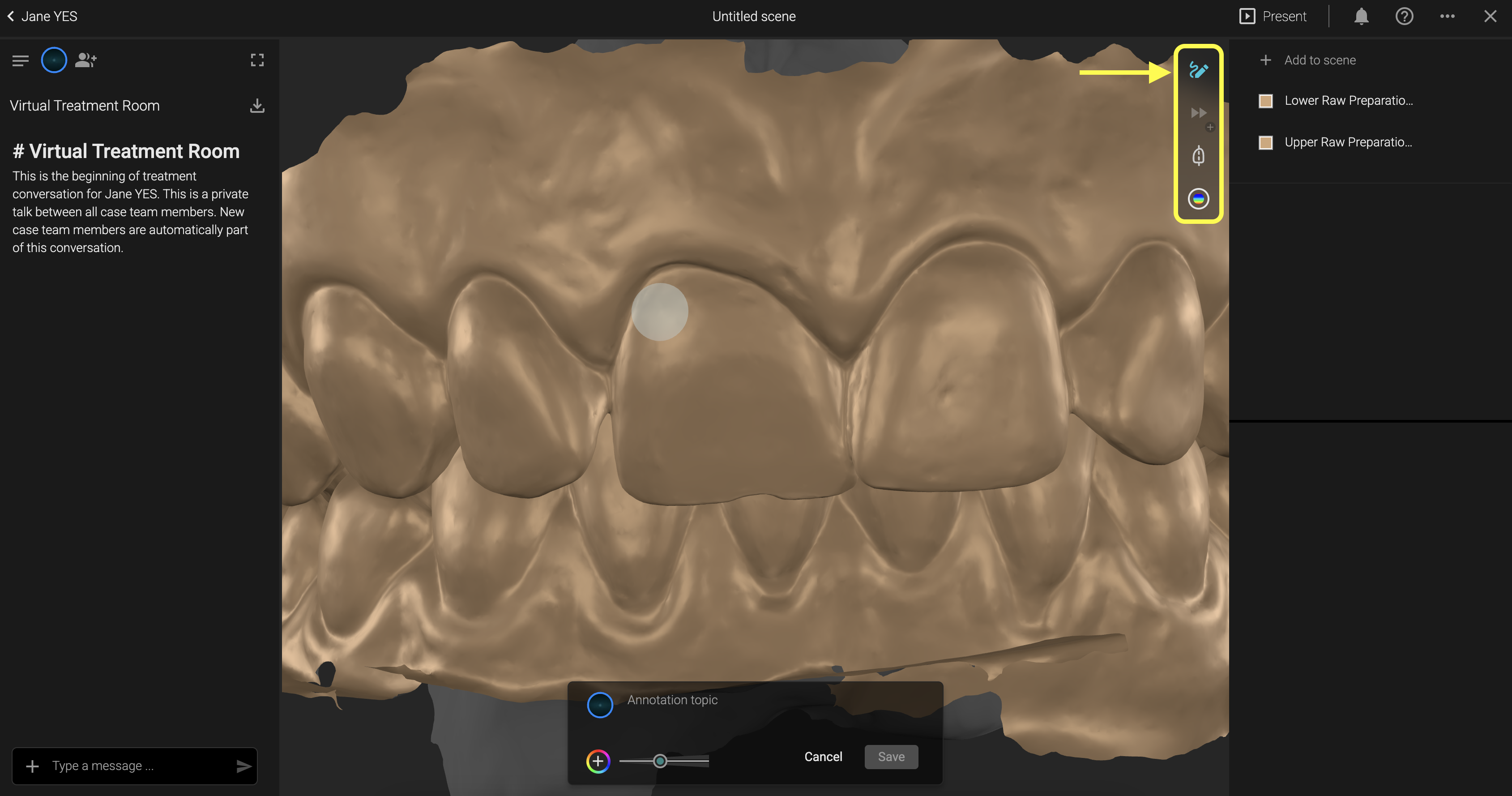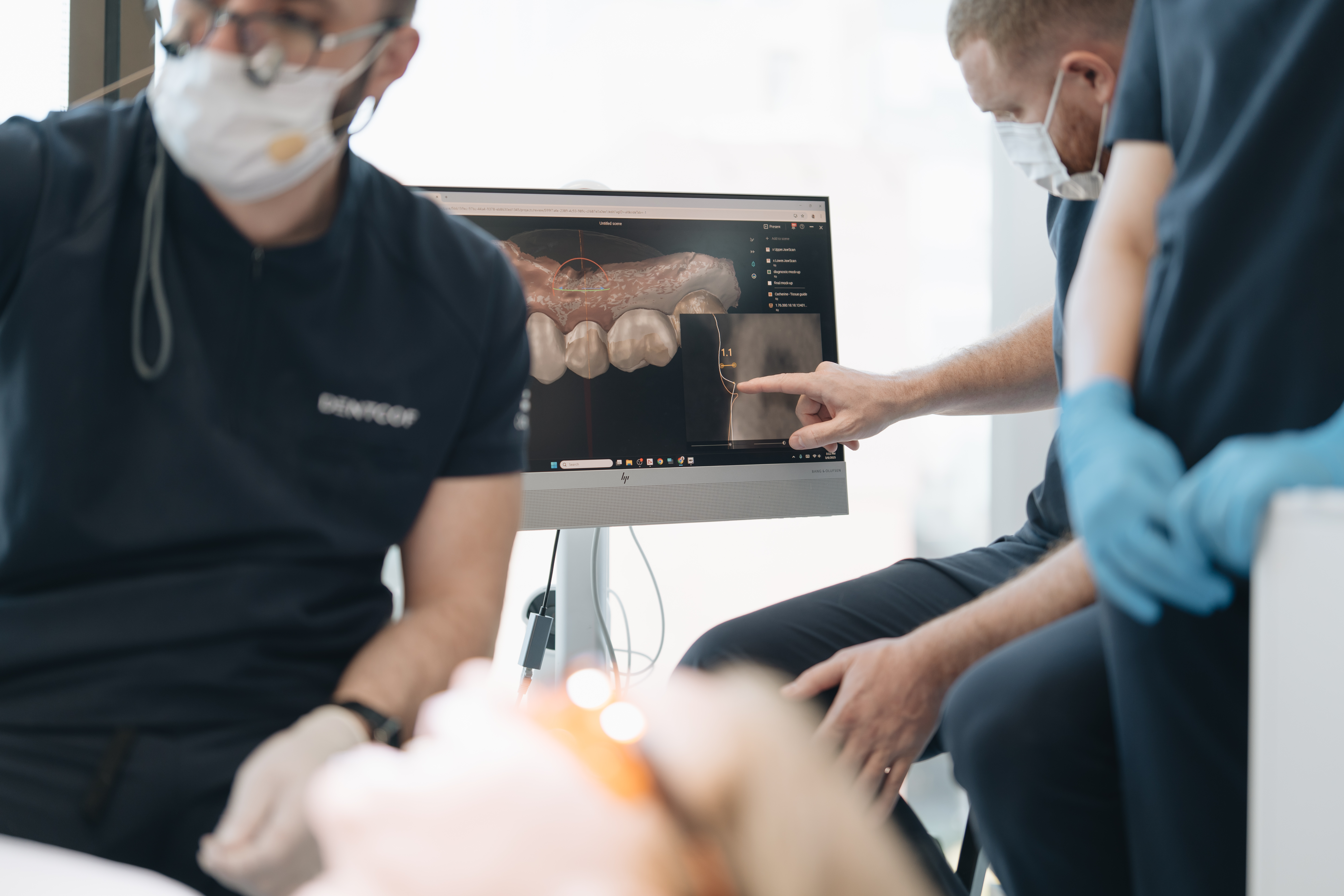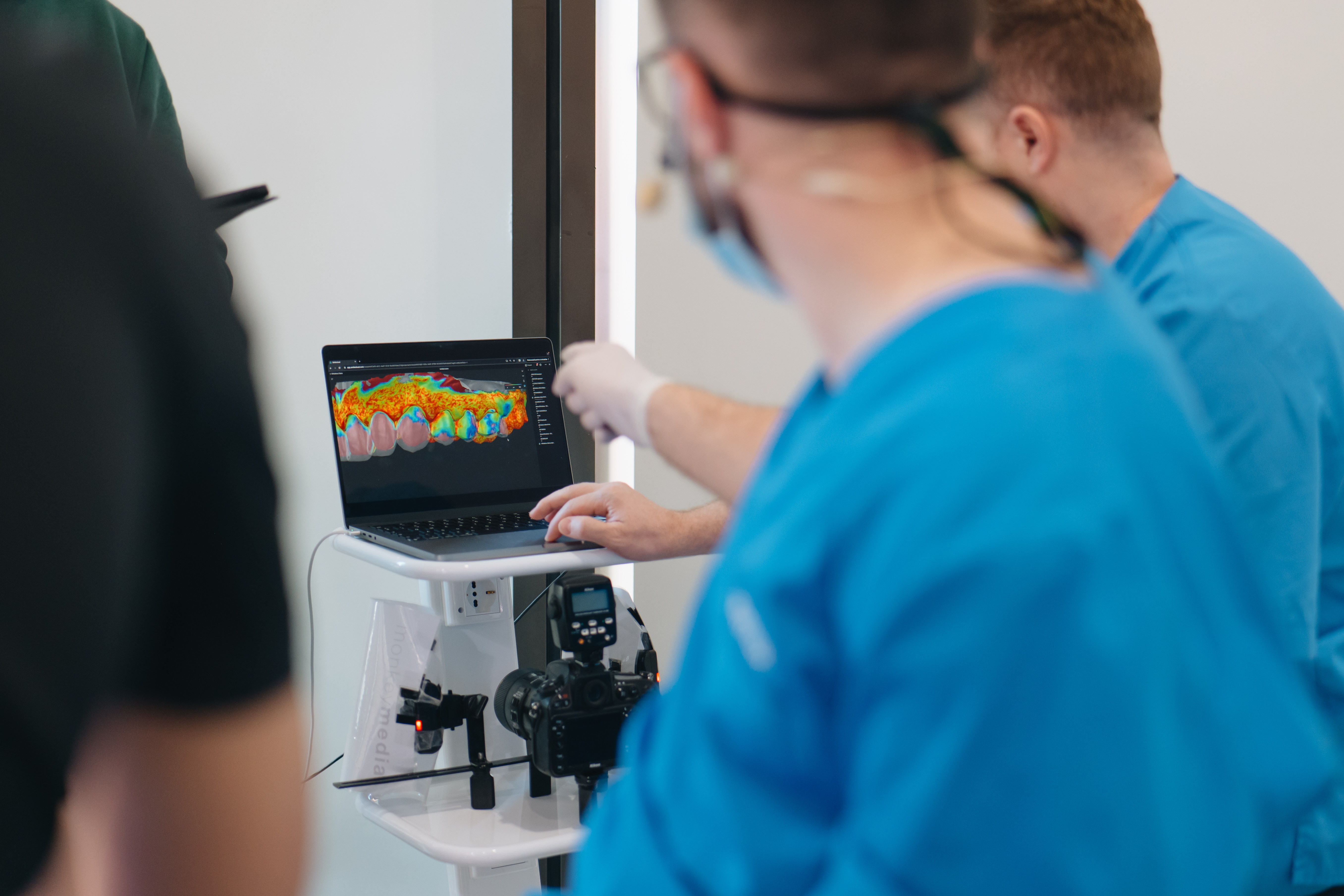Smilecloud Review
Smilecloud Review is a powerful tool designed for clinicians who want to overlay, visualize, and annotate multiple layers of 3D dental data, making it an essential part of digital planning and treatment evaluation.
Whether you're checking static occlusion, prepping for veneers, or reviewing lab work, Review brings clarity and precision right where you need it: at the intersection of design and evaluation.
✨ How to use Review
Here’s a quick overview of Review's core features:
🔹 Visualize Layered Data
Stack different 3D layers:
- scans
- CBCTs
- Designs, Guides, and more—for comprehensive evaluation.
Ready to Try It?
Access Review from the Projects panel inside your Smilecloud case. Simply add the layers you want to evaluate and use the tools in the top-right corner to annotate, measure, and activate the heatmap.

- Add 3D files to the scene

🔹 Add 3D Annotations
Make notes directly on 3D models. Add comments, tags, and visual markers to communicate with your lab or collaborators—right on the model.
Example: Annotate margin lines or correction areas on a crown design to avoid back-and-forths with your lab.

🔹 Explore Cross Sections
Use cross-sectional views to assess the biology, look for possible infections, and visualise the patient's overall state. Simply Double Click.
Tip: Perfect for surgical, implant placement, or crown lengthening assessments .
🔹 Measure Precisely with a Double Click
Perform fast, precise measurements between any two points in 3D. Just double-click to measure—ideal for checking bone levels, restoration space, or gingival height.

🔹 Evaluate Static Occlusion with the Heatmap
With the heatmap activated, you can visualize the space between 2 layers, helping you identify contact points, pressure areas, or under-prepped regions.
Use Case: Quickly identify if your prep has enough clearance for your technician’s restoration parameters.

🔹 Use as a Virtual Preparation Guide
Compare the pre-op scan with the lab’s design to evaluate your preparation while the patient is still in the chair. Save time, avoid reappointments, and improve lab communication.

🦷 Real-World Examples
Example 1: Crown Lengthening Feasibility
How much could we crown lengthen for this patient?
Steps:
- Add the patient’s initial scans.
- Upload and align the CBCT (align with upper scans)
- Use cross sections to inspect biological width and bone levels.
- Double-click to measure the distances and validate the amount of crown exposure possible.
Result: Confidently assess whether a surgical crown lengthening is viable and how much tissue can be removed safely.

Example 2: Prep Check Before Final Impression
How do you ensure your prep is lab-ready before the patient leaves?
Steps:
- Add the initial upper scan.
- Add the Functional Design provided by your lab.
- Activate the heatmap to visualize material thickness.
- Adjust settings to match the required restoration space (e.g., 400 for ceramics).
Result: You can correct under-prepped areas in real-time and ensure there’s enough space for esthetics and strength—without relying on technician feedback days later.

🛠 Review is Ideal For:
- Smile Design Verification
- Functional Analysis & Prep Checks
- Chairside Decision-Making
- Communication with Labs and Collaborators
- Pre-Surgical Planning with CBCT
- Esthetic and Functional Case Presentations
Pro Tip
Use Review as part of your daily workflow. Whether you're prepping a veneer case or checking the fit of a bridge, this tool is designed to help you catch errors, align expectations, and raise your standard of care.
